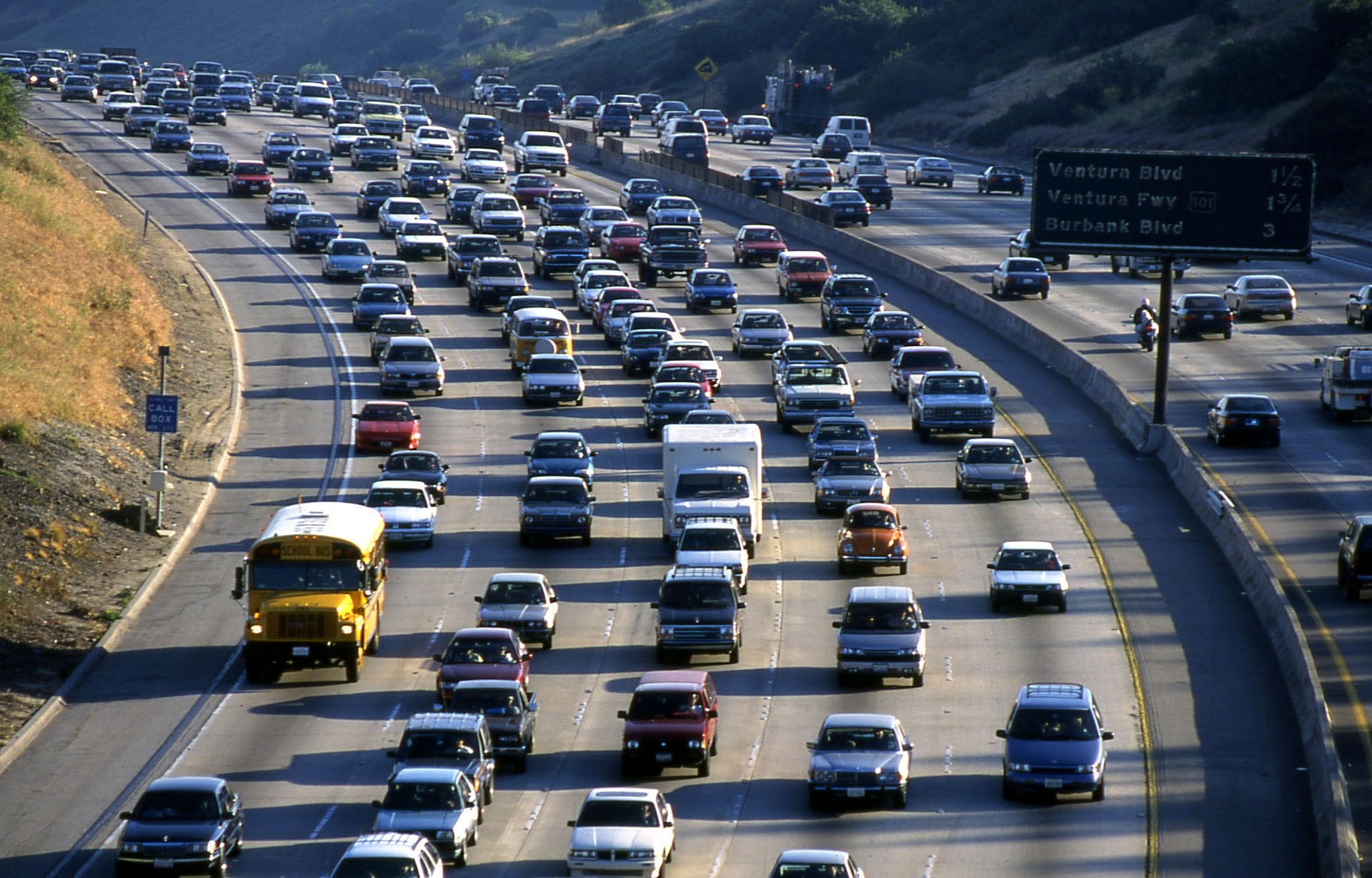Well, it’s official: Southern California’s infamous traffic is back to pre-pandemic levels. Worse yet, according to one estimate for SR 91—connecting Los Angeles to her Orange and Riverside suburbs—it might actually be worse. While morning commutes have dampened with the rise of remote work and flexible scheduling, the data suggest that traffic has merely shifted to midday. Some of this may be drivers taking more leisure trips: down in San Diego, weekend traffic is up by an estimated 20 percent over 2019.
Whatever the cause, the empty freeways and smog-free skies of the lockdown are now a distant and fading memory.
This traffic congestion is no minor inconvenience. On the contrary, it’s at the root of the various existential threats facing the region. By one recent measure by INRIX, time wasted sitting in traffic costs Los Angeles approximately $8.2 billion each year. The same study identifies I-5 and US-101 as the two most congested roads in America, driving up total annual commuting time by an estimated 80 and 76 hours, respectively—that is to say, a commuter from the San Fernando Valley to Downtown loses two workweeks sitting in traffic.
And while all those vehicles sit in traffic, they contribute to Southern California’s ongoing air quality crisis. According to the American Lung Association, the Inland Empire is now the battleground for the worst air quality in America, with San Bernardino County barely beating out Riverside County. The result has been a surge in respiratory problems across the region, a public health emergency that falls heaviest on working-class Californians, who disproportionately live near congested freeways.
So what’s a Southern California policymaker to do? For the past century, the plan has been to continually widen the freeways. But urban economists and planners have known for decades that this doesn’t work: while an additional lane might briefly reduce congestion, savvy drivers will rapidly shift their routes to exploit the savings. We saw this firsthand with the I-405 expansion in 2014: less than five years after an extra lane was opened through the infamous Sepulveda Pass, traffic had gotten worse.
Over the past few decades, many cities have zeroed in on a more effective solution: congestion pricing. At its root, traffic congestion is a supply and demand problem: a lot of people want to drive on the same roads at the same time of day. And at a price of zero—what we charge to drive on most freeways in Southern California—we end up with a shortage, such that the road fills up until traffic congestion becomes unbearable. As a result, we collectively pay for the cost of this congestion in longer commutes and worse air quality.
Congestion pricing changes this dynamic by assessing a small fee to use otherwise-congested freeways at certain times of day, incentivizing drivers to shift trips away from peak times, take a bus instead, or double-up with a co-worker. In a well-designed system, the fee should be set such that traffic is always free-flowing. Depending on how the program is designed, revenue could be dedicated to funding better transportation infrastructure for those willing to rethink their commute, or reducing some of California’s other infamously high fees. In cities as diverse as Singapore and London, such programs have effectively rolled back congestion—in states like Texas and Florida, tolling is increasingly the norm, funding needed infrastructure upgrades.
Could it ever happen in Southern California? Nobody likes to pay for something they previously thought of as free—even if they paid by sitting in mind-numbing traffic. Yet the status quo is clearly untenable, and with the FasTrak tolling system already in place and tolled stretches of I-10 and I-15 flowing freely, we’re already halfway there. Since 2019, LA Metro has been studying congestion pricing opportunities along some of the most congested roads in the region, including along I-405 and around Downtown. A pilot study could begin as early as 2025.
The thing I always tell the folks back home about Southern California is that everything that is wonderful about it—the perfect weather, the stunning vistas, the vibrant culture—can’t be replicated elsewhere, while everything that makes it such a stressful place to live—the awful traffic, the high housing costs, the terrible air quality—could easily be fixed. Congestion pricing is potentially one of those fixes, just lying around waiting for California leadership to act on internationally-recognized best practices. Traffic is back in Southern California—but with any luck, it won’t be for long.

